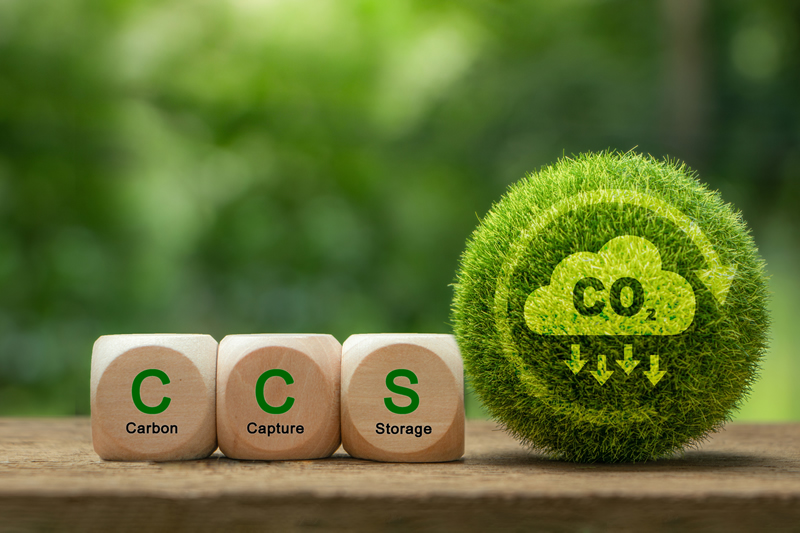Carbon Capture Storage Reaching A Turning Point In Decarbonisation
13
Carbon capture and storage (CCS) is emerging as a critical tool in the global push toward net-zero emissions—particularly for hard-to-abate sectors such as cement, steel, and chemical manufacturing, where alternative decarbonisation options are limited. While CCS has struggled to scale in the past, new momentum suggests that is changing.

DNV’s Energy Transition Outlook: CCS to 2050 forecasts that global CCS capacity will quadruple by 2030, supported by advances in technology and a surge of industry activity. This projection is reinforced by real-world developments: in May, Northern Lights—the world’s first open-access CO2 transport and storage network in Western Norway, received its inaugural shipment of liquefied CO2 from Heidelberg Materials. In the U.S., 1PointFive’s STRATOS facility in Texas is nearing operation as the world’s largest direct air capture (DAC) plant.
Over the next five years, cumulative CCS investments are expected to total around $80 billion, with roughly two-thirds of new capacity located in North America and Europe. Policy support is set to play a pivotal role, driving cost reductions of about 14% by 2030 through lower capital expenses for capture systems and reduced transportation and storage costs.
CCS is especially important for industries where emissions are structurally embedded in the production process:
-
Cement production - Releases CO2 both from the chemical reaction in clinker production and from high-temperature heating, typically fueled by fossil energy.
-
Steel production - Relies on carbon-intensive, high-heat processes often powered by coal or gas.
-
Chemical and petrochemical production - Uses fossil feedstocks and energy, generating substantial CO2 emissions.
-
Energy generation - The burning of coal, oil, or natural gas for power and heat remains a major global source of emissions.
-
Other heavy industries - Aluminum production, refining, and certain food and beverage processes also have significant carbon footprints.
These sectors are essential to modern society, yet their emissions are difficult to eliminate without CCS. With accelerating investment, policy momentum, and breakthrough projects now underway, CCS is positioned to play a central role in cutting global carbon emissions in the decade ahead.
Closer to home in the UK we have the very large The Acorn Project which is an ambitious carbon capture, utilisation, and storage (CCUS) development in northeast Scotland. It leverages existing oil and gas infrastructure to move captured CO2 from industrial emitters to secure geological storage sites deep beneath the North Sea. Serving as the transport and storage backbone of the wider Scottish Cluster, it plays a pivotal role in the UK’s path to net zero. Critics argue that the project risks prolonging the use of fossil fuels by enabling continued oil and gas extraction in the North Sea, hindering the transition to renewable energy.
Carbon Capture and Storage (CCS) could be key in the reduction in Carbon Dioxide (CO2) from industrial processes. Protea’s range of gas analysers have been used both in research into emerging technologies for CCS, but will also play an important role in the regulatory emissions monitoring from installations of CCS. Protea’s multi-gas FTIR technology is ideally suited to new processes involving carbon reduction, such as Carbon Capture and Storage (CCS).
#Protea #Emissions #Monitoring #CEMS #FTIR #Gas #Analysers #Shipping #Marine #Carbon #Capture
Other Articles
Global Underground CO2 Storage Data Offers Hope Amid Rising Emissions
01
IMO Postpones Adoption Of Global Net-Zero Shipping Framework
04
Pioneering Carbon Capture Projects Ready For Construction
03
Methanol & Ammonia Deemed Ready As Zero-Emission Shipping Fuels
01
CCS To Capture 15% Of Shipboard Carbon Emissions By 2050
29
Global Shipping Industry Struggles To Navigate Net Zero Transition
21
Carbon Capture Surges as Economics Policy & Industry Demand Align
14
GHG Emissions At Ports On The Rise Despite Initiatives
07
Carbon Capture Utilisation & Storage In A Nutshell
30